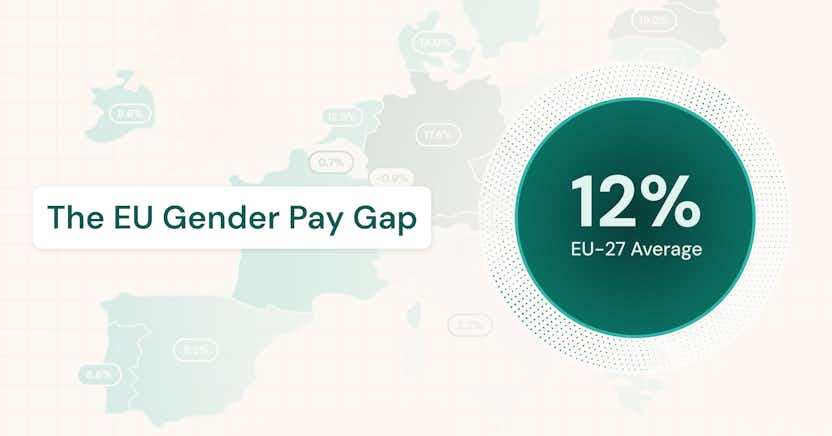What Is a Compensation Plan?
A compensation plan is a structured framework that outlines how an organization rewards its employees for their work. This includes all forms of financial and non-financial compensation, such as base salary, bonuses, commissions, equity incentives, deferred and non-cash compensation, and benefits. A well-constructed compensation plan defines the types of compensation available, eligibility criteria, performance expectations, and the mechanisms for determining pay levels and increases.
At its core, a compensation plan aims to attract, motivate, and retain talent while aligning employee performance with organizational goals. It reflects the company’s compensation philosophy and broader talent strategy and must comply with applicable laws and regulations governing labor, taxation, and pay equity.
Why are compensation plans important?
Compensation is one of the largest expenses for most organizations and one of the most powerful tools for influencing employee behavior. A thoughtful compensation plan:
- Drives business performance by incentivizing desired behaviors and outcomes.
- Supports recruitment and retention by offering competitive and appealing compensation packages.
- Ensures fairness and equity, minimizing pay disparities and compliance risks.
- Aligns with financial planning by budgeting for salary costs, incentive payouts, and long-term commitments like stock options.
In today’s complex business landscape, where roles are increasingly hybrid, global, and skill-based, compensation plans must be flexible and dynamic to remain effective.
What are key features and types of compensation plans?
Compensation plans can vary significantly depending on the organization’s size, industry, and workforce composition. However, most compensation plans include several common components:
1. Base salary structure
The fixed pay employees receive on a regular basis (such as hourly, monthly, annually). Base salaries are typically benchmarked against market data and internal job leveling systems.
2. Variable pay programs
These are pay components that vary based on performance, including:
- Bonuses: Discretionary or formula-based payouts tied to individual, team, or company performance.
- Commissions: Common in sales roles; based on a percentage of sales revenue or margin.
- Incentive Plans: Short-term or long-term performance-based incentives, often tied to KPIs or shareholder value.
3. Equity compensation
Stock options, restricted stock units (RSUs), or employee stock purchase plans (ESPPs), typically used to align long-term employee interests with company performance.
4. Benefits and perks
Health insurance, retirement contributions, paid time off, wellness programs, and other non-cash rewards that enhance total rewards.
5. Pay-for-performance models
Ties compensation increases or bonuses to performance evaluations, encouraging accountability and goal alignment.
6. Job grading and salary bands
Defines levels or bands for roles within the organization, guiding pay decisions and internal equity.
Why do organizations need a compensation plan?
An organization without a defined compensation plan risks inconsistency, inequity, and misalignment with strategic objectives. Compensation decisions made ad hoc or in silos can lead to:
- Internal pay disparities and perceptions of unfairness.
- Difficulty attracting talent due to uncompetitive offers.
- Legal risk due to noncompliance with equal pay or transparency regulations.
- Budget overruns caused by unplanned salary growth or incentive payouts.
- Misalignment of incentives that can demotivate employees or drive the wrong behaviors.
By contrast, a well-designed compensation plan provides a standardized approach that supports transparency, accountability, and strategic agility.
Who benefits from a compensation plan?
A compensation plan serves multiple stakeholders:
- Employees benefit from clarity, fairness, and the opportunity to be rewarded for performance.
- HR teams can make consistent and equitable decisions and communicate compensation policies effectively.
- Finance leaders gain visibility and control over compensation costs, and can accrue funds to cover projected payments..
- Managers can use compensation as a tool for motivation and recognition.
- Executives and shareholders benefit from compensation plans that drive organizational performance and align with long-term goals.
What are the global considerations in compensation plans?
In global organizations, compensation plans must also address regional differences in labor markets, cost of living, legal requirements, and cultural expectations around pay. Factors influencing plan design include:
- Local labor laws and tax regulations that affect minimum wage, bonus requirements, and the treatment of equity.
- Cultural norms and expectations, such as guaranteed bonuses or collective bargaining agreements.
- Cost of living and market salary benchmarks, which can vary dramatically by region.
- Currency stability and inflation, which may influence how fixed versus variable pay is structured.
A compensation plan that works in one country may not be legal or effective in another jurisdiction. Multinational companies must develop global frameworks that allow for local customization.
What legal and regulatory requirements affect compensation plans?
Compliance with labor laws and regulations is a non-negotiable aspect of compensation planning. Common regulatory concerns include:
- Equal Pay for Equal Work mandates, ensuring employees doing similar work are paid similarly regardless of gender or other protected characteristics.
- Pay transparency laws, which may require disclosure of salary ranges in job postings or public pay gap reporting.
- Classification of employees versus contractors, particularly relevant for commission or incentive-based roles.
- Overtime eligibility and minimum wage laws, which vary by jurisdiction.
- The EU Pay Transparency Directive which provides regulations and penalties to ensure companies are transparent and fair in their pay practices.
- The EU Corporate Sustainability Reporting Directive (CSRD), which includes pay equity and diversity reporting as part of broader ESG requirements.
Organizations must ensure their compensation plans are designed with compliance in mind and that they conduct regular audits to identify and correct discrepancies.
What is the role of technology in compensation planning?
Modern compensation planning is increasingly data-driven, requiring systems that can handle complexity and ensure compliance. Compensation management technology enables:
- Centralized compensation planning across regions, functions, and employee types.
- Automation of workflows and approvals, reducing manual errors and increasing auditability.
- Real-time analytics to support pay equity reviews, budgeting, and performance alignment.
- Scenario modeling and forecasting, helping HR and Finance teams make strategic decisions.
- Employee transparency, with portals for viewing total compensation statements or plan details.
Technology transforms compensation planning from a reactive administrative process to a proactive strategic tool.
What are common approaches to compensation planning: pros and cons?
There are different approaches to developing compensation plans:
Market-based approach
Uses external benchmarking to align pay with the competitive market.
- Pros: Attracts talent; easy to justify pay levels.
- Cons: Can lead to internal inequities or pay compression; reactive rather than strategic.
Performance-based approach
Rewards individuals based on performance metrics or goals.
- Pros: Aligns compensation with outcomes; encourages accountability.
- Cons: Requires robust performance measurement systems; may increase pay variability.
Skill-based or competency-based pay
Pays employees for the skills or competencies they possess, regardless of role.
- Pros: Encourages skill development; flexible workforce.
- Cons: Can be complex to administer; subjective assessments can introduce bias.
Pay transparency models
Openly shares salary bands and compensation structures.
- Pros: Builds trust; supports equity initiatives.
- Cons: Can cause friction if not well-communicated or understood.
How does a compensation plan relate to a total rewards strategy?
While the terms are often used interchangeably, a compensation plan is a subset of a broader total rewards strategy. Total rewards encompass not just compensation, but also career development, well-being, recognition, and culture.
Components
Compensation plus: training and education, perks, development
Purpose
Attract, align, retain, reward
Engage, retain, motivate, develop, and support culture
Aspect | Compensation Plan | Total Rewards Strategy |
|---|---|---|
Focus | Pay-related elements | Holistic view of employee value proposition |
Components | Salary, bonuses, incentives, equity, benefits | Compensation plus: training and education, perks, development |
Purpose | Attract, align, retain, reward | Engage, retain, motivate, develop, and support culture |
How can you evaluate compensation plan effectiveness?
Key indicators of an effective compensation plan include:
- Pay equity: Are employees paid fairly across gender, ethnicity, and other demographics?
- Market competitiveness: Are roles paid within a target percentile of market benchmarks?
- Employee satisfaction: Do employees understand and value their compensation?
- Retention and engagement: Are compensation levels contributing to low turnover?
- Incentive alignment: Are performance-based rewards driving desired outcomes?
- Cost efficiency: Is the organization achieving ROI on compensation spend?
Compensation management software can help track and analyze these metrics in real time, offering dashboards, audit trails, and predictive analytics.
What are best practices for creating and managing compensation plans?
- Define a clear compensation philosophy that aligns with company values and strategy.
- Benchmark against relevant markets and adjust for location, industry, and role level.
- Ensure internal equity by using job leveling frameworks and salary bands.
- Incorporate pay transparency where feasible to build trust and support compliance.
- Use data-driven decision-making with robust analytics and modeling tools.
- Regularly review and update plans to adapt to market trends and regulatory changes.
- Communicate clearly and consistently with employees and managers about how compensation decisions are made.
Frequently asked questions (FAQs) about compensation plans
- What should be included in a compensation plan?
Base salary, variable pay, benefits, eligibility rules, governance process, and compliance measures. - How often should a compensation plan be reviewed?
At minimum annually, but ideally more frequently in volatile markets or during periods of organizational change. - Can one compensation plan work globally?
A global compensation philosophy can guide local plans, but regional and legal differences often require localized implementation. - How does pay equity fit into a compensation plan?
Pay equity audits and proactive adjustments should be built into compensation planning cycles to ensure fairness and compliance. - How do companies balance fixed and variable pay?
The mix depends on role type, industry norms, and performance culture. Sales roles may skew more heavily toward variable pay, while technical or support roles may rely more on base salary. - What technology supports compensation planning?
Compensation management platforms like beqom enable organizations to centralize and automate plan design, budgeting, equity reviews, and analytics across business units and geographies. - What are common pitfalls in compensation planning?
Inconsistency, lack of transparency, outdated benchmarks, and ignoring equity considerations can all undermine the effectiveness of a compensation plan.
Summary
A compensation plan is more than a document—it’s a strategic tool that shapes workforce behavior, supports talent objectives, and reflects an organization’s values. To remain competitive and compliant, organizations must continuously evaluate and refine their compensation plans with data, technology, and a clear understanding of market dynamics and internal equity.
For Compensation and Benefits professionals, mastering the design and management of compensation plans is essential to driving organizational success.






